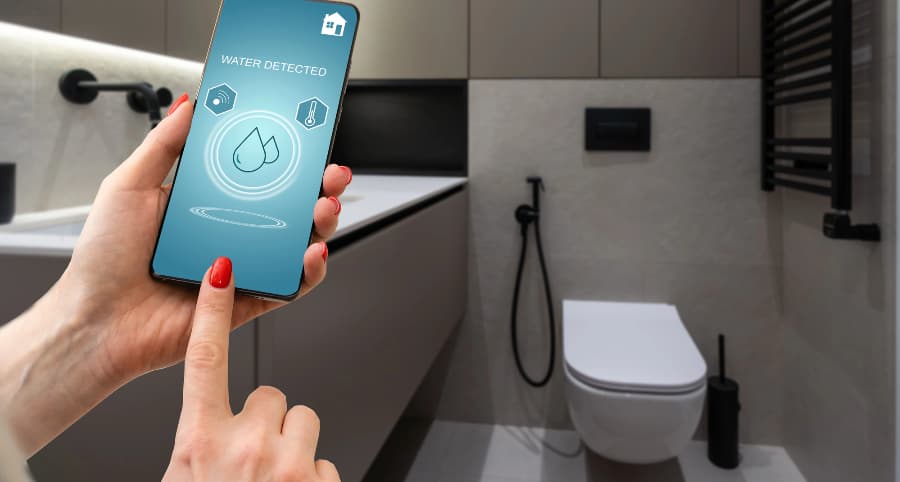How does a water sensor work and why install one with your San Diego smart home?

One tiny leak in your home can lead to big problems and thousands of dollars in damage. You have to defend against this threat; fortunately, there’s a simple way to achieve this. A water sensor is a simple, effective, and affordable solution. See how they work and why you ought to incorporate water sensors into your San Diego smart home.
How water sensors protect San Diego your home
Water penetrates homes in many ways, whether from a storm-related event, plumbing failure, appliance malfunction, or human error. No matter how it takes place, you need to know immediately, and this is how water sensors help. But how precisely do they work?
Many water sensors are conductive and function with corresponding electrodes. When water invades the area between the electrodes, an electrical connection is formed, setting off your alarm. You’ll also come across capacitive sensors that release an electrical field. Your alarm activates when water reaches the conductive surfaces of these devices and interrupts the field. Optical sensors employing infrared LED light are an additional option.
Some water sensors give you more
Certain advanced water sensors provide even more peace of mind as they use integrated temperature sensors. This is an excellent feature in preventing pipe freezing. If there’s a drastic reduction in temperature, you’ll know right away. Taking measures before pipes rupture will shield you from water damage and costly repairs.
Why incorporate water sensors into your San Diego smart home?
When water problems arise, you have to be alerted right away. You can attain this goal by integrating water sensors into your smart home. Whether you’re there to hear the alarm or away, you’ll be sent an instant alert on your smartphone. As an added benefit, your 24/7 monitoring agents will be notified. Every moment is critical in a water emergency to limit the damage and interruption to your household.
Where should you install water sensors?
Any location at risk of flooding is an appropriate place for water sensors. Place them in these areas:
- Bathrooms: Attach next to tubs or in back of toilets.
- Basements: Water frequently enters lower floors through damaged walls or because of excess rain or malfunctioning sump pumps.
- Next to water heaters or appliances: Any water-utilizing appliance may over time leak.
- Underneath sinks: Water sensors are ideal for discovering plumbing leaks in locations not easy to see.
- Attics: Detect roof leaks promptly and prevent costly repairs.
Get water sensors with your Vivint smart home
Give your property the complete protection it deserves with Vivint’s modern tools. Our water sensors in San Diego integrate with your Vivint smartphone app to send you instant updates when your alarm activates. You also get integrated temperature sensors to avert pipe freezing. Learn more about the smart home components available in San Diego by reaching out to (619) 492-4324 today.
